|
|
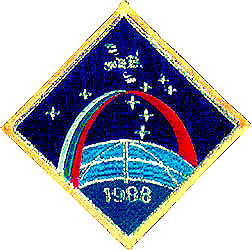
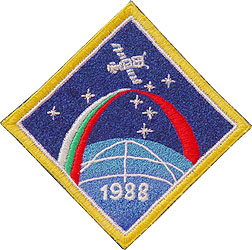
(Spacecraft: September 7, 1988)
| Crew & Mission |
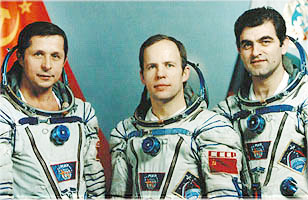
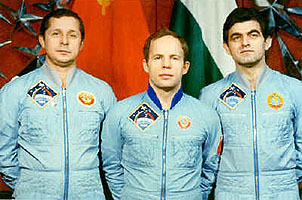
Savinich, Solovyev and Aleksandrov in their training Sokols (l) and their TK-2 training suits (r).
Soyuz TM-5 was launched on June 7, 1988. The crew included Anatoly Solovyev, Victor Savinich and Bulgarian Alexander Aleksandrov (not to be confused with the Soviet cosmonaut with the same name!). The Bulgarian was aboard to make up for an earlier Bulgarian Interkosmos-mission that failed to dock with the old Salyut-6 station (Soyuz-33 with Nikolai Rukavishnikov and Georgi Ivanov), and perform the scientific mission named 'Shipka'.
The cosmonauts docked to the Kvant-1 module at Mir's aft port on June 9 and joined the EO-3 crew, consisting of Vladimir Titov and Musa Manarov. They conducted joint medical experiments and made photography observations of Bulgaria.
The three visitors left Mir aboard Soyuz TM-4 on June 17, leaving their fresh TM-5 spaceship behind. Titov and Manarov undocked TM-5 the next day, waited for the station to turn around 180 degrees and re-docked to Mir's front port, clearing the way for a fresh Progress-vehicle. The Soyuz TM-5 returned to Earth on September 7, 1988, carrying TM-6 visitors Vladimir Lyakhov and Abdul Mohmand.
| The Real Thing |
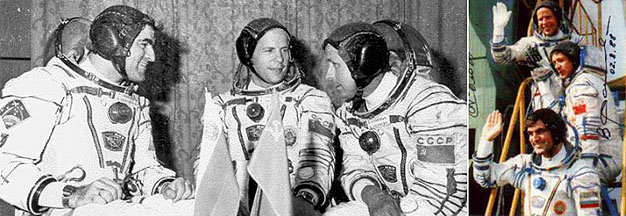
Aleksandrov, Solovyev and Savinich in their flight Sokols. The mission patch is on the right shoulder.
The patch was worn on the right sleeve of the Sokols during launch and landing and on the right sleeve of the intravehicular suits as well. Aleksandrov was wearing a Bulgarian flag and a Bulgarian seal on his suit. Both Russians sported a Soviet Seal and a silk-type CCCP-flag with rounded letters. On the front of their Sokols, the cosmonauts were wearing a stylized second generation Mir-patch.
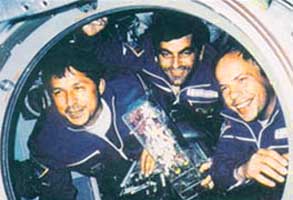
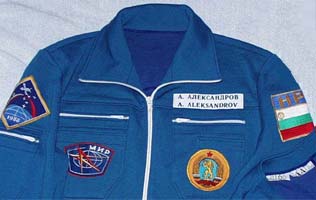
Left: The crew entering the Mir station in their PK-14 suits. Right: Aleksandrov's PK14-suit, as seen in an internet auction.
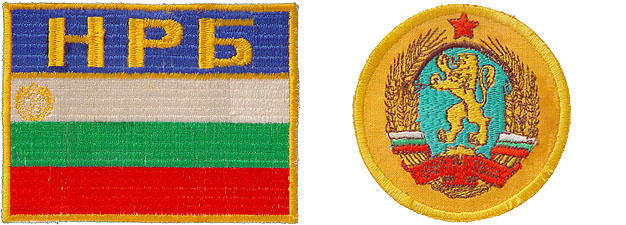
| Variations |
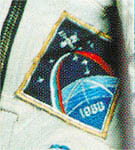
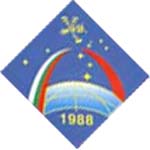
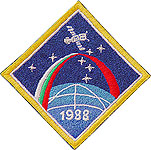
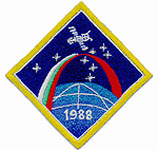
The patch worn on the training IVA, training Sokols and flight Sokols (left) had eight small stars, just like the original artwork (center, left). The one in the Presentation Patch Set (center, right) and the one seen on Aleksandrov's PK14-suit (see picture above), had seven bigger stars. Also note that these patches did not have the color variation in the globe, as seen in the artwork and the eight-star version. Also, it lacks the white line between the blue horizon and the black space and seems to have a thicker yellow border. We did also see a picture of this version with eight stars though (right). There might even be a fourth variation: the eight-star patch depicted at the top of this page has only two shades of blue in the globe. The images of the crew show that the original patches had three different shades...
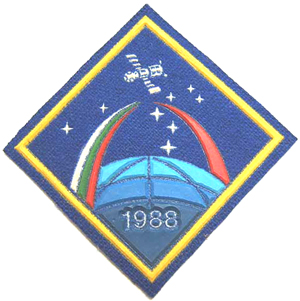
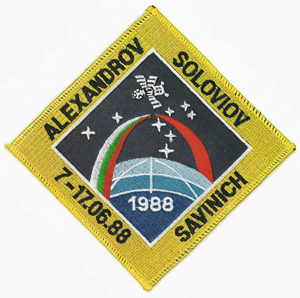
A plastic/rubber version was also produced (left) and a special commemorative version was made for the post-flight tour the crew made throughout Bulgaria.
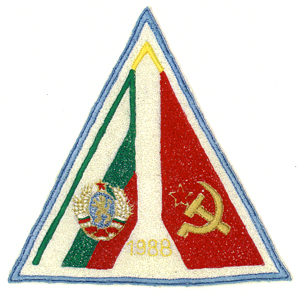
This alternative mission patch design was produced and considered, but rejected.
| Source |
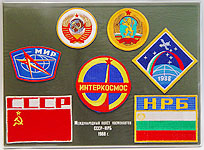
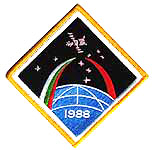
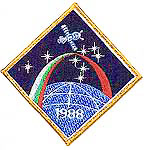
The TM-5 Presentation Patch Set (l), the Space Commerce Corporation reproduction (c) and the Stewart Aviation reproduction (r).
The seven-star PK14 version of the patch has been available as part of a presentation set, offered to high Soviet spaceflight officials. The eight-star patch shown at the top of the page was scanned from the book "40 Let Kosmicheskogo Podviga" (Moscow 2000). The eight-star variation with eight stars was e-mailed to us, we forgot who sent it. The pictures of the other patches (Bulgarian flag, Bulgarian seal, the seven-star PK14 patch) where supplied by Tony Boatright of Houston. We do not have the original patches ourselves. Two souvenir versions exist: one made by Stewart Aviation in England (stars are too big and 1988 is in wrong font) and one by the Space Commerce Corporation in Texas (looking better than the Stewart version, but with a too large white inner border).